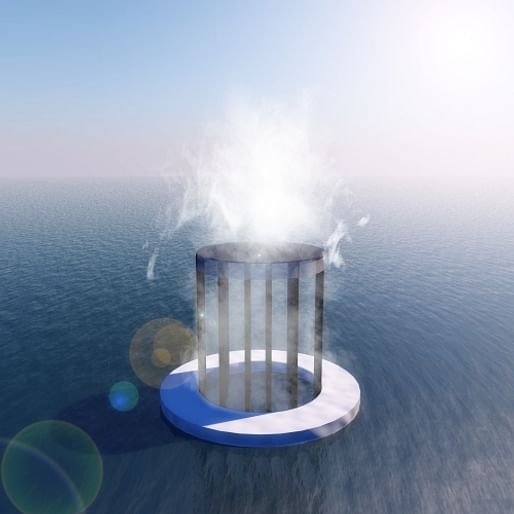
Researchers from UC Santa Cruz and UC Merced have proposed a “solar canal solution” to address the state’s water shortages, energy needs, and climate goals. In what they describe as a “win-win” for both water and climate in California, the researchers outlined the benefits of covering 4000 miles of canals across California in solar panels, including promoting renewable energy development, conserving water, and improving the quality of the natural environment. The solution is proposed by Roger Bales (Distinguished Professor of Engineering, University of California, Merced) and Brandi McKuin (Postdoctoral Researcher in Environmental Studies, University of California, Santa Cruz).
Unsurprisingly, the initiative would generate massive volumes of electricity. The researchers estimate that the system could provide 13 gigawatts of renewable energy, which is roughly half of the new sources the state needs to add to meets its clean energy goals: 60% from carbon-free sources by 2030 and 100% from renewables by 2045. The water running beneath the solar panels could also aid energy production, with the cooling effect boosting the performance and energy output of the panels by 3% versus land-based panels.
Aside from energy production, the researchers cite the conservation of water and land as primary benefits for the idea. Their study showed that covering all 4000 miles of California’s canals with solar panels would save more than 65 billion gallons of water per year through reduced evaporation – enough to irrigate 50,000 acres of farmland, or meet the water needs of over 2 million people. In addition, by concentrating solar infrastructure on land already occupied, such as canals, the approach would free up undeveloped land for other uses, be it residential, commercial, parklands, or other infrastructure.
The idea could also have knock-on advantages for natural habitats and environments. The scheme would prevent over 80,000 acres of farmland or natural habitats being converted into solar farms – an important factor for a state that produces more than 50% of the fruits, nuts, and vegetables consumed across the United States. The initiative would also prevent habitat loss, and avoid harm to desert scrub plant communities, some of which are culturally important to local indigenous tribes. The researchers cite one example from 2012-2014, when the construction of the Genesis Solar Energy Center in the Sonoran and Mojave deserts destroyed trails and burial sites, and damaged important cultural artifacts.

As a final consideration, the researchers point to clean air as a benefit of their proposal. Solar energy could replace the emission-heavy diesel engines currently used to pump water through California’s agricultural valleys, while also providing charging outlets for electric vehicles. The shading provided by the solar panels could also prevent the growth of aquatic weeds that restrict water flow through the canals. At present, fighting these weeds involves the use of herbicides and mechanical equipment; a method that is not only harmful to air quality and the environment, but also expensive. The researchers estimate that shading the canals would save $40,000 per mile in weed growth prevention – giving annual statewide savings of $69million.
The project would not be without precedent. In 2015, engineers in India spent $18million building a canal-top solar power plant to aid agriculture, with subsequent projects now commissioned including a 25-mile-long system costing $14million. While scaling these costs up to California’s 4000 miles of canals would equate to $2.2billion, the actual cost could fluctuate widely depending on labor costs, material costs, and feasibility. While undoubtedly a heavy sum, this figure still represents only 0.1% of the funds allocated in President Biden’s recent national infrastructure plan.
“California’s aging power infrastructure has contributed to catastrophic wildfires and multi-day outage,” say the researchers. “Building smart solar developments on canals and other disturbed land can make power and water infrastructure more resilient while saving water, reducing costs and helping to fight climate change. We believe it’s a model that should be considered across the country – and the planet.”
10 Comments
duh!
Great idea. It'll be interesting to see who aligns themselves for and against this. True colors will emerge much clearer than all of the intentionally misleading signs along Route 5.
I wonder if it could reduce the amount of e-coli reaching the fields as well.
You can include to your research, Rene Peralta, co-founder of the Tijuana firm Generica's Tijuana River project.
Also this DOE funded research in Arizona http://tectonicus.com/solarriv...
It will be beautiful when the desalination plant introduces the next generation of agricultural hydro rivers through the tectonicus method.
Arizona / DOE should plan the Artesian well like Gisela; except make it Oracle for agriculture from the Sea of Cortez with a new industry leading Desal filtration unit next to Biosphere.
They have floating solar parks in the Netherlands, hope they can make this work too!
using subtitles is advised for non-Dutch speakers (edit: I forgot no youtube in news-items...)Why not also piggy back on the transmission infrastructure and include wind and water turbine generators?
Block this user
Are you sure you want to block this user and hide all related comments throughout the site?
Archinect
This is your first comment on Archinect. Your comment will be visible once approved.